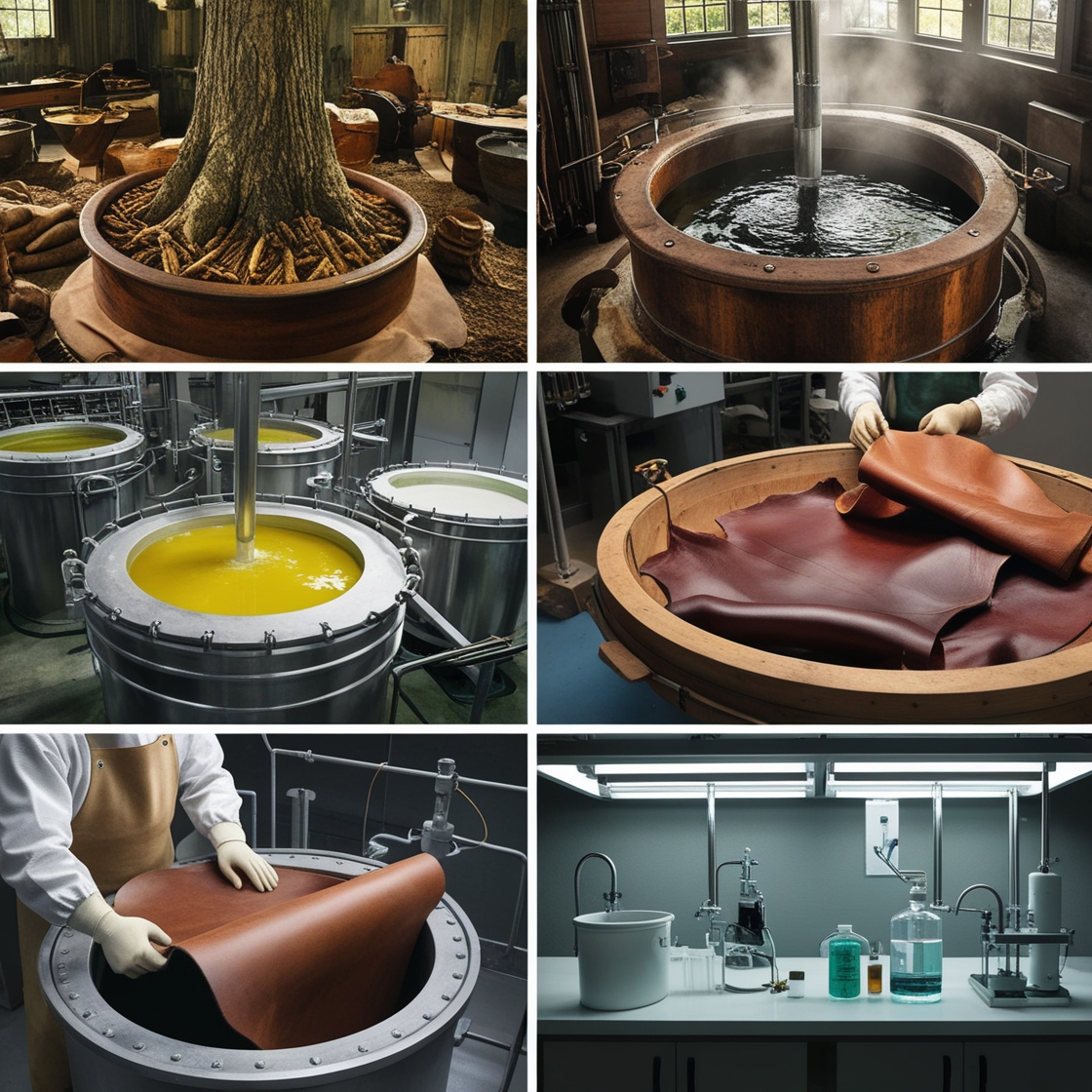Leather tanning is an ancient craft with a variety of techniques that transform raw hides into durable and beautiful leather. Each method offers distinct qualities, affecting the leather’s flexibility, color, and resistance. This article explores the main tanning methods, highlighting their processes and benefits.
Vegetable Tanning: The Classic Approach
What is Vegetable Tanning?
Vegetable tanning is one of the oldest tanning methods. It utilizes tannin, an acidic compound found in tree bark, to treat animal hides. This traditional technique involves soaking hides in vats of progressively stronger tannin solutions.
Why Choose Vegetable Tanning?
This method is renowned for producing leather with remarkable durability and rich, natural color. Vegetable-tanned leather develops a unique patina over time, adding character and depth. It’s a favored choice for high-quality, long-lasting leather goods.
How It Works
- Preparation: Hides are first soaked to clean and soften them.
- Tanning Process: The hides are then submerged in tannin-rich solutions. This process may take several weeks to achieve the desired results.
- Drying: Once tanned, the leather is dried and finished, ready for crafting.
Chrome Tanning: Modern Efficiency
What is Chrome Tanning?
Introduced in the late 19th century, chrome tanning revolutionized the leather industry. This method uses chromium salts, specifically chromium sulfate, to tan the hides. It’s known for its speed and flexibility.
Why Choose Chrome Tanning?
Chrome-tanned leather is highly resistant to water and heat, making it ideal for a wide range of products. The process is quicker than vegetable tanning, allowing for faster production and more flexible leather.
How It Works
- Preparation: Hides are cleaned and soaked.
- Tanning Process: The hides are immersed in chromium sulfate solutions, where the chromium binds to the collagen fibers.
- Finishing: After tanning, the leather is treated and dried, resulting in a supple and versatile material.
Oil Tanning: Soft and Resilient
What is Oil Tanning?
Oil tanning is used primarily for soft, porous leathers such as chamois and deerskin. This method involves treating the hides with fish oil, which is worked into the fibers and then oxidized in ovens.
Why Choose Oil Tanning?
This technique creates leather that can be repeatedly wetted and dried without damage. It is prized for its softness and unique texture, making it suitable for specialized applications.
How It Works
- Preparation: Hides are cleaned and softened.
- Tanning Process: Oil is pounded into the hides, which are then heated to oxidize the oil.
- Finishing: The leather is conditioned and prepared for use, offering a durable and flexible finish.
Synthetic Tanning: The Modern Alternative
What is Synthetic Tanning?
Synthetic tanning uses artificial chemicals to mimic the effects of vegetable and chrome tanning. Though less common, it offers an alternative for producing leather with specific characteristics.
Why Choose Synthetic Tanning?
Synthetic methods can replicate the properties of traditional tanning processes but with more controlled and consistent results. They are often used to meet particular demands in the leather industry.
How It Works
- Preparation: Hides are cleaned and prepared.
- Tanning Process: Synthetic chemicals are applied to achieve desired leather qualities.
- Finishing: The leather undergoes final treatments and conditioning.
Conclusion
Understanding the various leather tanning methods provides insight into how different types of leather are crafted. From the traditional approach of vegetable tanning to the modern efficiency of chrome and synthetic methods, each technique has its unique advantages and applications. Whether you prefer the durability of vegetable-tanned leather or the flexibility of chrome-tanned leather, each method plays a vital role in the leather industry.
Explore our range of leather tanning tools and resources to dive deeper into these fascinating methods. Embrace the artistry and science behind leather tanning and enhance your leather crafting skills today.
Read more about Why Leather Tanning: A Historical Perspective
